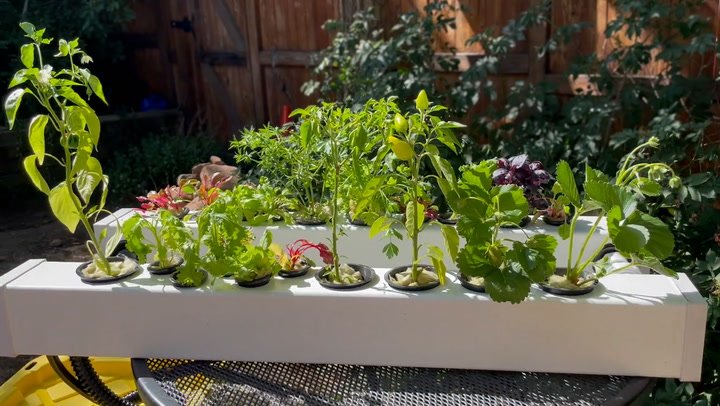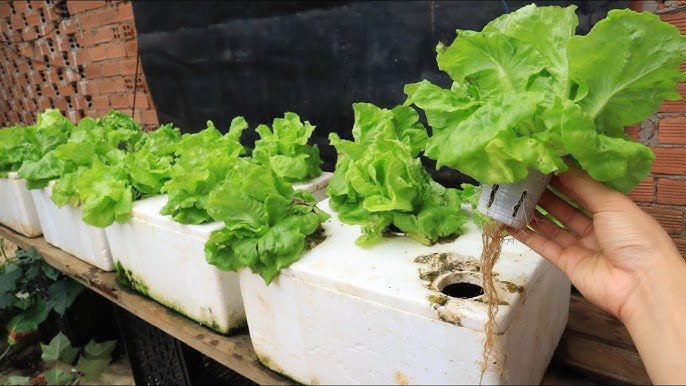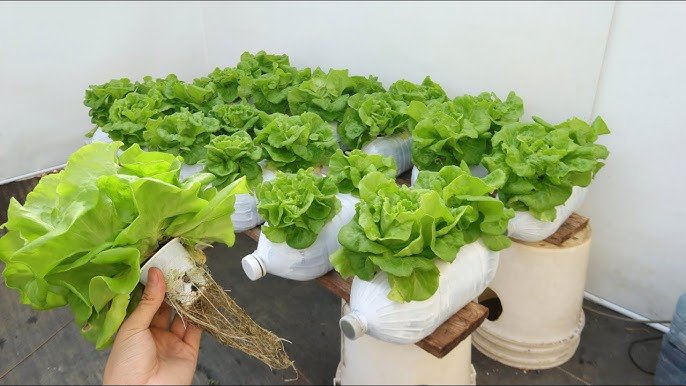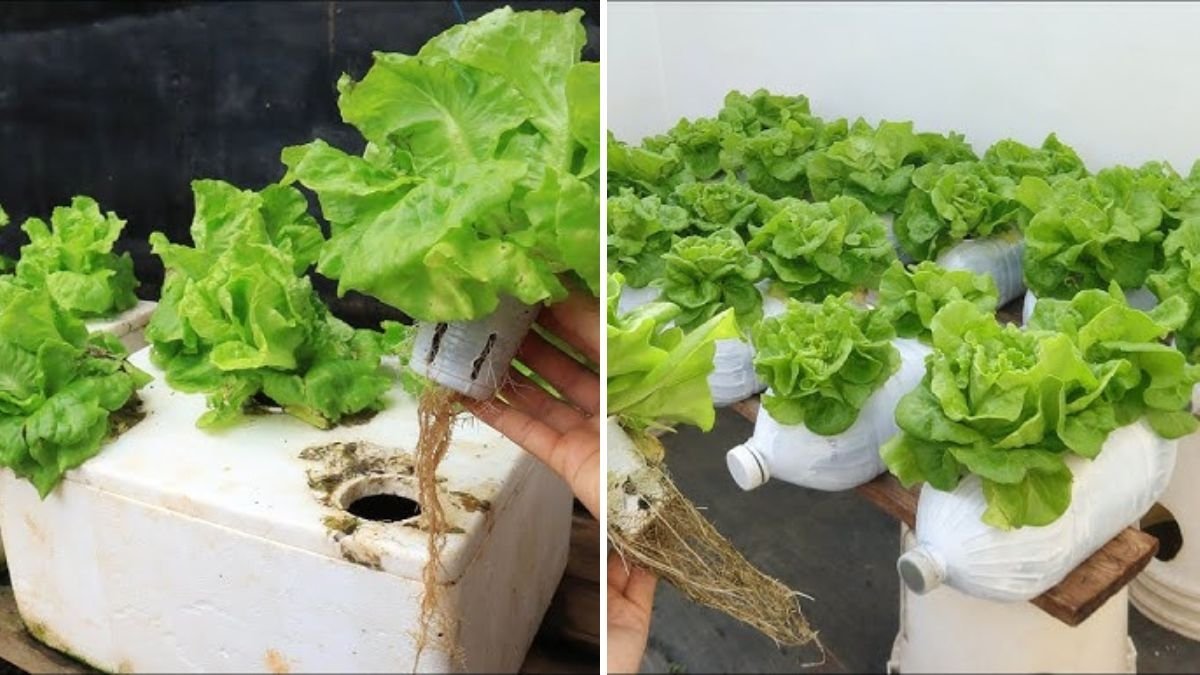Hydroponics is revolutionizing the way we grow plants. Imagine cultivating fresh vegetables, herbs, and greens without soil, using just water, nutrients, and a little creativity. Hydroponic systems are space-efficient, environmentally friendly, and perfect for home gardeners who want fresh produce year-round. In this guide, we’ll show you how to make a hydroponic system at home, step by step, whether you have a small balcony, kitchen counter, or backyard.
Why Hydroponics is Perfect for Home Gardening

Hydroponic gardening offers many benefits over traditional soil-based planting:
- Space Efficiency: Grow more plants in less space.
- Faster Growth: Plants grow up to 50% faster in nutrient-rich water.
- Water Conservation: Hydroponics uses 70–90% less water than soil gardening.
- Year-Round Production: Grow fresh vegetables regardless of the season.
- Pest-Free Plants: No soil means fewer pests and diseases.
- Easy to Monitor: Nutrient levels and plant health are easier to control.
Whether you want fresh lettuce, basil, spinach, or cherry tomatoes, hydroponics is a smart, modern solution.
Step 1: Choose Your Hydroponic System Type

There are several hydroponic systems suitable for home use. Selecting the right one depends on your space, budget, and type of plants:
- Nutrient Film Technique (NFT): A thin film of nutrient solution flows over the roots. Ideal for leafy greens.
- Deep Water Culture (DWC): Plants float on nutrient-rich water using a floating platform. Best for lettuce, herbs, and small vegetables.
- Kratky Method: A passive hydroponic system without pumps. Perfect for beginners and small setups.
- Wick System: Uses wicks to draw nutrient solution to plant roots. Simple but suitable for small plants.
- Ebb and Flow: Nutrient solution floods the plants periodically and drains back into the reservoir. Great for various vegetables.
For beginners, Deep Water Culture (DWC) or Kratky Method is often the easiest and most cost-effective choice.
Step 2: Gather Materials

To build a basic home hydroponic system, you’ll need:
- Container or Reservoir: To hold nutrient solution (plastic bins, buckets, or trays).
- Net Pots or Cups: Hold plants and growing medium.
- Growing Medium: Options include clay pebbles, coco coir, perlite, or rockwool.
- Hydroponic Nutrients: Balanced solution with nitrogen, phosphorus, potassium, and micronutrients.
- Water: Clean, preferably filtered or dechlorinated.
- Air Pump & Air Stone (for DWC): Oxygenates the nutrient solution.
- pH Meter and pH Up/Down Solutions: To monitor and adjust water pH (ideal 5.5–6.5).
- Seeds or Seedlings: Lettuce, spinach, basil, and herbs are beginner-friendly.
Having the right materials ensures your hydroponic system runs efficiently and produces healthy plants.
Step 3: Prepare the Reservoir

The reservoir is the heart of your hydroponic system:
- Clean the container thoroughly to remove dust or residues.
- Fill it with water and mix in the hydroponic nutrient solution according to the instructions.
- Measure and adjust the pH to between 5.5–6.5 for optimal nutrient uptake.
- If using a DWC system, place the air stone connected to the pump at the bottom to oxygenate the water.
A well-prepared reservoir ensures plants get all the nutrients they need.
Step 4: Set Up Net Pots and Growing Medium
Net pots hold the plants above the nutrient solution while supporting the roots:
- Fill net pots with your chosen growing medium.
- Place seedlings or germinated seeds carefully into the medium.
- Ensure roots can reach or will eventually reach the nutrient solution.
- For DWC, use floating platforms to suspend net pots above the water.
The growing medium supports plant roots and helps maintain stability and moisture.
Step 5: Planting Seeds or Seedlings
Choose plants suitable for hydroponics:
- Leafy Greens: Lettuce, spinach, kale, arugula
- Herbs: Basil, mint, parsley, cilantro
- Small Vegetables: Cherry tomatoes, peppers, cucumbers
Plant seeds directly in the growing medium or transplant seedlings carefully, ensuring roots have access to nutrients.
Step 6: Maintain Your Hydroponic System

Hydroponics requires regular maintenance to keep plants healthy:
- Check Nutrient Levels: Replenish the reservoir as water evaporates or plants absorb nutrients.
- Monitor pH: Test pH 2–3 times per week and adjust if necessary.
- Provide Light: Indoor hydroponics needs 12–16 hours of light per day using sunlight or LED grow lights.
- Temperature Control: Keep water between 18–24°C (64–75°F) for optimal growth.
- Inspect Plants: Look for signs of disease, nutrient deficiencies, or algae growth.
Consistent monitoring ensures healthy, fast-growing plants.
Step 7: Harvesting Hydroponic Crops
One of the biggest advantages of hydroponics is faster growth and quick harvesting:
- Leafy Greens: Can be harvested in 3–5 weeks depending on the variety.
- Herbs: Trim regularly to encourage new growth.
- Vegetables: Harvest cherry tomatoes or peppers as they ripen.
Use clean scissors or knives to prevent contamination and encourage regrowth. With proper care, your hydroponic system can produce multiple harvests per season.
Tips for a Successful Home Hydroponic System
- Start small and expand as you gain confidence.
- Choose plants that grow well hydroponically.
- Keep the system clean to prevent algae or pests.
- Use quality nutrients and monitor pH levels.
- Ensure sufficient light, either natural or artificial.
- Rotate crops or experiment with different varieties for continuous harvest.
Following these tips helps maximize yield and efficiency in your home hydroponic garden.
Benefits of Hydroponics at Home
- Fresh Produce Anytime: Enjoy homegrown, pesticide-free vegetables and herbs.
- Space-Saving: Perfect for apartments, rooftops, or small gardens.
- Sustainable: Uses less water and reduces the need for soil and fertilizers.
- Educational: Great project for families to learn about plant growth and nutrition.
- Fast Results: Plants grow faster than traditional soil-based methods.
Hydroponics is not just gardening—it’s a modern, eco-friendly, and productive approach to growing food at home.
Conclusion
Building a hydroponic system at home is easier than most beginners think. With simple materials, careful planning, and consistent maintenance, anyone can grow fresh, nutritious vegetables, herbs, and greens without soil. From choosing the right system and setting up a reservoir to planting seedlings and harvesting crops, hydroponics allows you to maximize space, water efficiency, and plant growth.
Whether you want to supplement your kitchen with fresh produce or explore modern farming techniques, a home hydroponic system is an amazing way to cultivate plants year-round. With patience and care, your hydroponic garden can thrive, providing delicious, healthy greens for your family and friends.

Leave A Comment